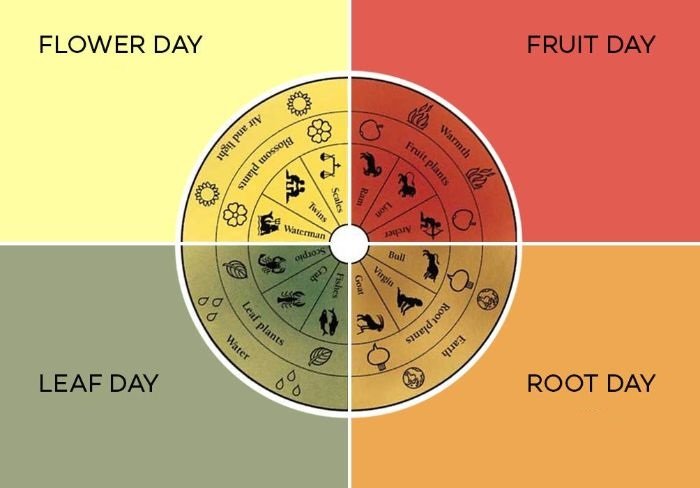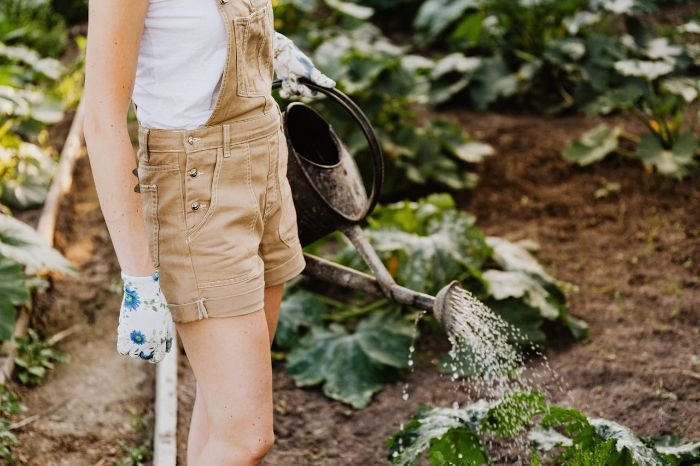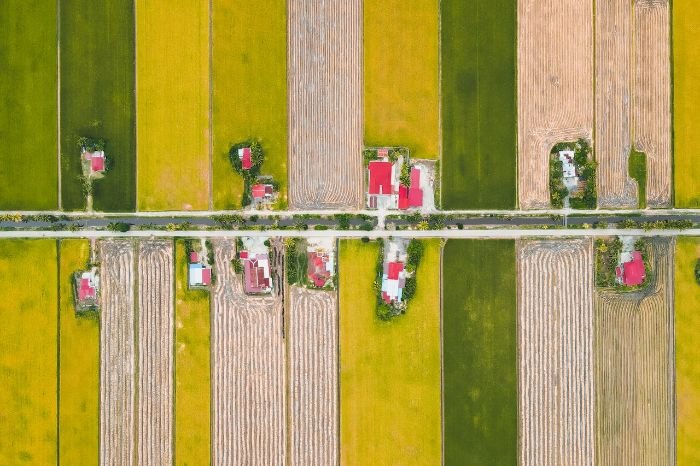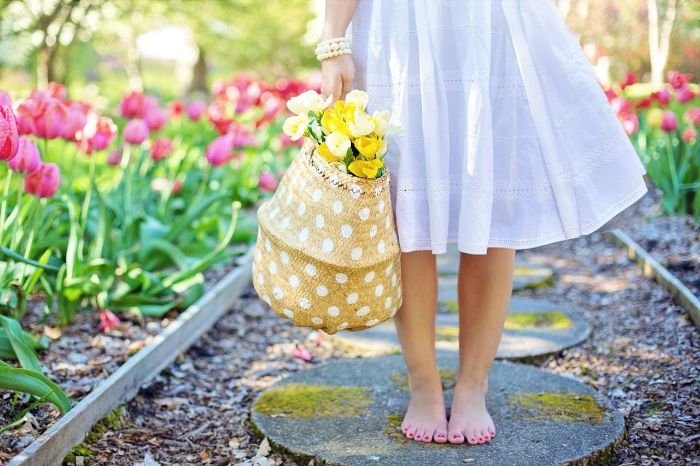Have you thought about a deeper way to garden? Something that connects all parts of nature? Biodynamic gardening is this approach. It uses the hidden forces in our ecosystem.
Dr. Rudolf Steiner started biodynamic gardening in the 1920s. It’s a way to garden that’s good for the planet and all living things. It mixes science with the spiritual side of nature to make gardens healthy and lasting.
Every part of a biodynamic garden matters. This includes the land, plants, animals, soil, compost, and people. By using biodynamic ways, gardeners make a whole system that works well together.
Biodynamic gardening uses moon and planet cycles and special mixes to help plants grow. It’s all about being aware, setting goals, and feeling connected. So, how can this help your garden? Let’s dive into biodynamic gardening and see how it can change things.
Key Takeaways:
- Biodynamic gardening is a holistic and sustainable approach that goes beyond conventional organic farming methods.
- It was developed by Dr. Rudolf Steiner in the 1920s and aims to create a harmonious and interconnected system.
- Biodynamic gardening considers all elements, including fields, plants, animals, soils, compost, and people.
- It utilizes lunar and planetary cycles and special preparations to support the vitality of the garden.
- By embracing biodynamic principles and practices, gardeners can cultivate a thriving and balanced ecosystem.
Table of Contents
Introduction
Welcome to the world of biodynamic gardening! We’ll explore what it is and its history. Biodynamic gardening is more than organic farming. It’s a way to work with nature’s cycles for a balanced ecosystem.
What is Biodynamic Gardening?
Biodynamic gardening merges spiritual and hands-on methods, uniting nature’s tangible and intangible qualities – a concept first presented by Dr. Rudolf Steiner in the 1920s. This philosophy goes beyond organic farming, aligning with sustainable soil management practices to foster balance between soil, plants, animals, and people.
He taught us to care for the land in a way that boosts its life force. This approach aims for a system where plants, animals, soil, and people live well together. It believes healthy soil means healthy plants and food.
Historical Background
Biodynamic gardening started in the early 1900s, when people worried about soil health and industrial farming’s harm. Dr. Rudolf Steiner offered a new way to farm that focused on soil health.
Now, biodynamic gardening is popular around the world. Gardeners use it to grow food that’s good for people and the planet. It’s used in small gardens and big farms alike.
Core Principles of Biodynamic Gardening
Biodynamic gardening focuses on a holistic way of farming and gardening. It sees everything in the garden as connected. This method aims for a balance between soil, plants, animals, and humans. This leads to a garden that is sustainable and full of life.
Holistic Approach
The holistic approach in biodynamic gardening treats the garden as a living thing. It looks at the garden’s overall health and vitality. By making the garden diverse and balanced, gardeners help it fight pests and diseases better.
Integration with Nature’s Cycles
Nature has cycles, and biodynamic gardening follows these. It works with the moon and planets to help plants grow. By planting and harvesting at the right times, gardeners get better plants and health.
Biodynamic gardening relies on celestial rhythms – moon phases and planetary alignments—to enhance plant vitality. Alongside these cosmic cycles, understanding soil pH and fertilizer interactions ensures nutrients remain balanced for vigorous growth and robust plant health.
Biodynamic Preparations
Biodynamic preparations are important in gardening. They are made from herbs and help the soil and plants grow. Each one has a special job, like making soil fertile or helping plants take in nutrients. Gardeners use these preparations carefully to keep their garden in balance.
Biodynamic Preparations and Their Uses
Biodynamic preparations are key in gardening. They make soil fertile and help plants stay healthy. These preparations use natural stuff and special ways to get their benefits. Let’s look at some important biodynamic preparations and how they help in gardening.
Preparation 500 – Horn Manure
Preparation 500, or horn manure, is a famous one. It’s made by putting cow manure in a cow horn during winter. Then, it ferments. Later, it’s added to soil in small amounts to boost microbes and soil structure.
This helps plants absorb nutrients better, grow roots stronger, and makes soil more alive.
Preparation 501 – Horn Silica
Horn silica, or Preparation 501, comes from ground quartz crystals. It’s made by putting quartz in a cow horn in summer. Then, it’s buried to get sunlight. This helps plants make food better, stand up to challenges, and fight off diseases.
It’s sprayed on plants to let them soak up silica’s good stuff.
Compost Preparations
Biodynamic compost preparations involve chamomile, nettle, dandelion, and yarrow, each infused into compost piles to revitalize soil and stimulate nutrient absorption. Coupling these herbs with composting 101 techniques transforms kitchen scraps and plant debris into a powerful resource for soil fertility.
These preparations make soil full of life and nutrients, helping plants grow and keeping ecosystems healthy.
Field Sprays
Field sprays are crucial in biodynamic gardening. They mix plants like stinging nettle, valerian, and oak bark with water. Brewing or fermenting them brings out their good stuff.
These sprays fix soil balance, control plant growth, and boost life. You can spray them on plants and soil. This makes nutrients available, helps plants grow, and keeps ecosystems in tune.
Using these biodynamic preparations in your garden makes it thrive with nature. Horn manure, horn silica, compost preparations, and field sprays each have special benefits. They help soil and plants, following biodynamic gardening’s green and regenerative ways.
Biodynamic Calendar and Planting Guide
The biodynamic calendar is a key tool for gardeners. It uses lunar and planetary cycles to help plants grow better. By planting at the right times, gardeners can make their plants healthier and more productive.

Importance of Lunar and Planetary Cycles
Lunar and planetary cycles affect life on Earth, including farming. In biodynamic gardening, these cycles change soil moisture and plant growth. Gardeners can use these cycles to help their plants grow strong.
Planting by the Moon
Planting by the moon means planning activities with the moon’s phases and zodiac position. The biodynamic calendar tells when to plant different plants. For example, leafy greens grow well during the waxing moon phase.
Practical Use of the Biodynamic Calendar
The biodynamic calendar helps gardeners plan their year. It tells the best times for planting, pruning, and harvesting. Following its advice helps gardeners make the best choices for their gardens.
Using the biodynamic calendar changes gardening. It connects you with nature’s rhythms. This way, you can grow a beautiful and healthy garden by using lunar and planetary cycles.
Soil Health and Fertility
Building Healthy Soil
Building healthy soil is key in biodynamic gardening. It means making a good place for plants to grow by taking care of the soil ecosystem. Adding organic stuff and good bugs to the soil makes it fertile and sustainable.

Using compost is a great way to make healthy soil. Composting turns kitchen scraps and plant waste into food for the soil. This helps plants grow better by making the soil better at holding water and giving out nutrients.
Don’t over-till the soil and avoid synthetic fertilizers and pesticides. This keeps the good bugs in the soil. It helps plants grow strong by supporting the soil’s natural balance.
Composting in Biodynamic Gardening
Composting is very important in biodynamic gardening. It’s a way to turn waste into something good for the soil. Composting adds nutrients, improves soil structure, and makes the soil fertile.
Biodynamic gardeners use different ways to compost, like aerobic and anaerobic methods. They make sure the compost has the right mix of carbon and nitrogen. They also add special preparations to help the compost work better.
Composting helps make healthy soil and is good for the planet. It turns waste into something useful and helps the soil and plants. It’s a smart way to take care of the soil in biodynamic gardens.
Enhancing Soil Microorganisms
Soil microorganisms are vital for biodiversity and plant nutrition, as they decompose organic matter while warding off pests. Cultivating beneficial soil microbes underpins healthy soil, ensuring a strong foundation for any biodynamic garden.
Biodynamic gardening focuses on making more of these good bugs. By doing this, gardeners make the soil better for plants. They use organic stuff, compost, and special preparations to help the soil.
Helping these microorganisms makes plants healthier and the garden more sustainable. A balanced mix of these bugs creates a great place for plants to grow. This leads to more plants and healthy soil for a long time.
Pest and Disease Management
Natural Pest Control Methods
By prioritizing natural pest control methods and biodiversity, biodynamic gardeners steer clear of harsh chemicals. Instead, they cultivate habitats that entice beneficial insects, maintaining a harmonious pest balance.
Crop rotation is a key part of biodynamic gardening. It means changing what crops grow in different spots each season. This stops pests from getting too many of their favorite foods.
Companion planting helps too. By planting certain plants together, gardeners can keep pests away. For instance, marigolds with tomatoes keep nematodes away and bring in good bugs like ladybugs.
Attracting good bugs is another way to fight pests. By planting flowers for bees and butterflies, and for bugs that eat pests, gardens become healthier. This makes the garden balanced and pest-free.
These natural methods help biodynamic gardeners keep pests away. They make their gardens healthy and full of life.
Biodynamic Remedies for Plant Health
Biodynamic gardeners also use special remedies for plant health. These remedies come from things like herbs, minerals, and compost. They help plants fight off diseases and stay strong.
Compost preparations, like numbers 502 to 507, help break down organic matter. They make soil better and give plants more nutrients. These special mixes are made from plants and animal parts. They make compost better and help plants grow.
Other remedies, like herbal teas and mineral solutions, fight diseases and fix nutrient gaps. A nettle tea can make plants stronger and fight off fungus. A mix of rock phosphate can help with phosphorus needs.
Using these remedies, gardeners can keep plants healthy. They make soil richer and cut down on chemical use.
Biodynamic Gardening Practices
Biodynamic gardening is all about making a garden healthy and sustainable. It uses a whole approach that works with nature’s cycles. This leads to healthier plants and a strong garden.
Key practices like crop rotation and diversity, companion planting, and cover cropping are very important. They help plants grow well and make the garden strong against pests and diseases.
Crop Rotation and Diversity
Crop rotation is key in biodynamic gardening. It means changing what crops you grow to keep the soil healthy and stop pests and diseases. Each crop needs different nutrients and affects the soil in its own way.

This way, the soil doesn’t get worn out. It also stops pests and diseases from spreading. This means you use fewer chemicals in your garden.
Adding many different plants to your garden makes it even better. This brings in good bugs and keeps away the bad ones. It also makes the soil healthier by helping with nutrients and bugs.
Together, crop rotation and growing many plants make a strong garden. This means you don’t need to use harmful chemicals to keep your garden healthy.
Companion Planting
Companion planting is when you grow plants together that help each other. Some plants keep pests away, and others bring in good bugs. This helps you use fewer chemicals to fight pests.
Some plants also help each other by sharing nutrients. For example, some plants fix nitrogen in the soil. This makes other plants grow better without needing extra fertilizer.
Cover Cropping
Cover cropping is a cornerstone of biodynamic practice, where certain plants shield the soil between main crops to reduce erosion, suppress weeds, and enrich organic matter. For more insight, see how cover crops enhance soil structure and long-term fertility.
They also bring in good bugs and add organic matter to the soil. This helps the soil stay healthy.
Choosing the right cover crops can solve specific soil problems. Some fix nitrogen, while others improve the soil’s structure. This makes it better for plants to grow.
Using practices like crop rotation, diversity, companion planting, and cover cropping makes a garden healthy and sustainable. These methods help plants grow well and are good for the environment. By working with nature, gardeners can have a garden that’s full of life and keeps the soil healthy.
Lessons Learned from Experienced Biodynamic Gardeners
Biodynamic gardening has become more popular over time. Many gardens and farms use this method to grow food in a sustainable way.
Experienced biodynamic gardeners have learned a lot over the years. They share their knowledge to help others start their own gardens:
- Develop a deep connection with the land and embrace the principles of stewardship.
- Understand the importance of observation and tuning in to nature’s cues for optimal planting and harvesting.
- Integrate diverse plant varieties to enhance natural pest control and promote biodiversity.
- Adopt biodynamic preparations and field sprays to nurture soil fertility and plant health.
- Practice crop rotation and companion planting to maximize yields and minimize pest and disease pressure.
Learning from these experts can help beginners avoid mistakes. It sets them up for success in their gardens.
Getting Started with Biodynamic Gardening
Biodynamic gardening is a way to grow plants that works with nature’s cycles. If you’re new and want to try this green gardening method, here are easy steps to start your journey.
Basic Steps for Beginners
- 1. Understand the Principles
- 2. Create a Biodynamic Plan
- 3. Prepare Your Garden
- 4. Implement Biodynamic Preparations
- 5. Follow the Biodynamic Calendar
- 6. Maintain Soil Health
- 7. Manage Pests and Diseases Naturally
- 8. Practice Crop Rotation and Diversity
- 9. Embrace Companion Planting
- 10. Monitor and Adapt
These steps will help you start a biodynamic garden. Each step can be tailored to your garden’s needs. Remember, biodynamic gardening is a journey of learning and trying new things.
Resources and Tools for Learning
As a beginner, it’s key to find educational resources and tools. Here are some good ones:
- Books – “Biodynamic Gardening for Beginners” by Monty Waldin, “The Biodynamic Orchard” by Ehrenfried Pfeiffer
- Workshops and Courses – Look for local gardening groups or farms with workshops or courses on biodynamic gardening.
- Biodynamic Calendar – Use biodynamic calendars online or in book form to plan your garden by the moon and planets.
These resources and tools will give you important knowledge and practical skills. Learning is key in biodynamic gardening. So, take the chance to learn and grow your skills for a better garden.
Conclusion
Biodynamic gardening is a way to grow plants that looks at the whole picture. It sees how everything in nature is connected. This approach helps plants, soil, and people all thrive together.
We looked at the main ideas of biodynamic gardening in this article. We talked about its history and how it uses the moon and planets to help plants grow. We also covered making healthy soil, controlling pests naturally, and planting crops together.
Biodynamic gardening is a green way to grow our food. It helps us use fewer chemicals and makes our gardens healthier. Using special preparations and following a special calendar can make plants grow better and make our gardens more alive.
As we work to make our food systems better and protect our planet, biodynamic gardening is key. It lets us grow lots of food and helps heal the environment. So, let’s try biodynamic gardening and see how great it can make our gardens.
FAQ
What is biodynamic gardening?
Biodynamic gardening is a way to farm and garden that cares for all parts of a garden. It includes fields, plants, animals, soils, compost, and people. It’s more than organic farming. It mixes science with nature’s spirit.
Who introduced biodynamic gardening?
Dr. Rudolf Steiner, a philosopher and scientist, started biodynamic gardening in the 1920s.
What are the core principles of biodynamic gardening?
It focuses on farming and gardening holistically. It sees how all parts of a garden work together. It uses nature’s cycles and special preparations to help plants grow.
What are biodynamic preparations?
These are special mixes from nature. They help make the soil better, help plants grow, and keep the garden healthy. They also make the garden more balanced and full of life.
How does the biodynamic calendar guide planting and gardening activities?
The biodynamic calendar looks at how the moon and planets affect plants. It tells when to plant, work the soil, and harvest for the best results. This helps plants grow better.
How can soil health be improved in biodynamic gardening?
To improve soil health, focus on creating a balanced underground world. Use compost and help the tiny life in the soil. These are key to biodynamic gardening.
How does biodynamic gardening manage pests and diseases?
It fights pests and diseases in a natural way. It uses crop rotation, planting things together, and bringing in good bugs. It also uses natural remedies to keep plants healthy.
What are some common biodynamic gardening practices?
Common practices include rotating crops, planting things together, and using cover crops. These help make the garden diverse and healthy.










